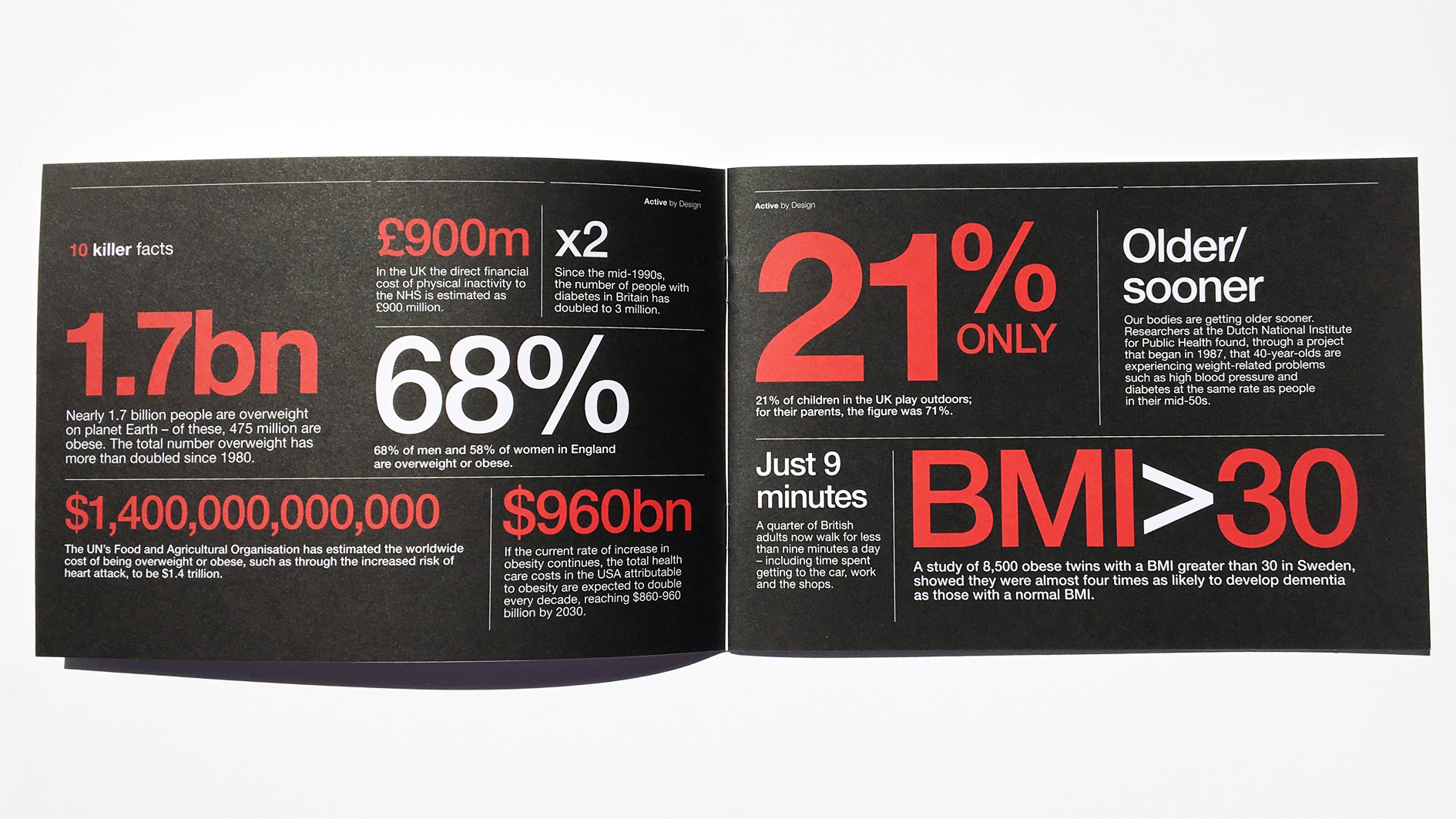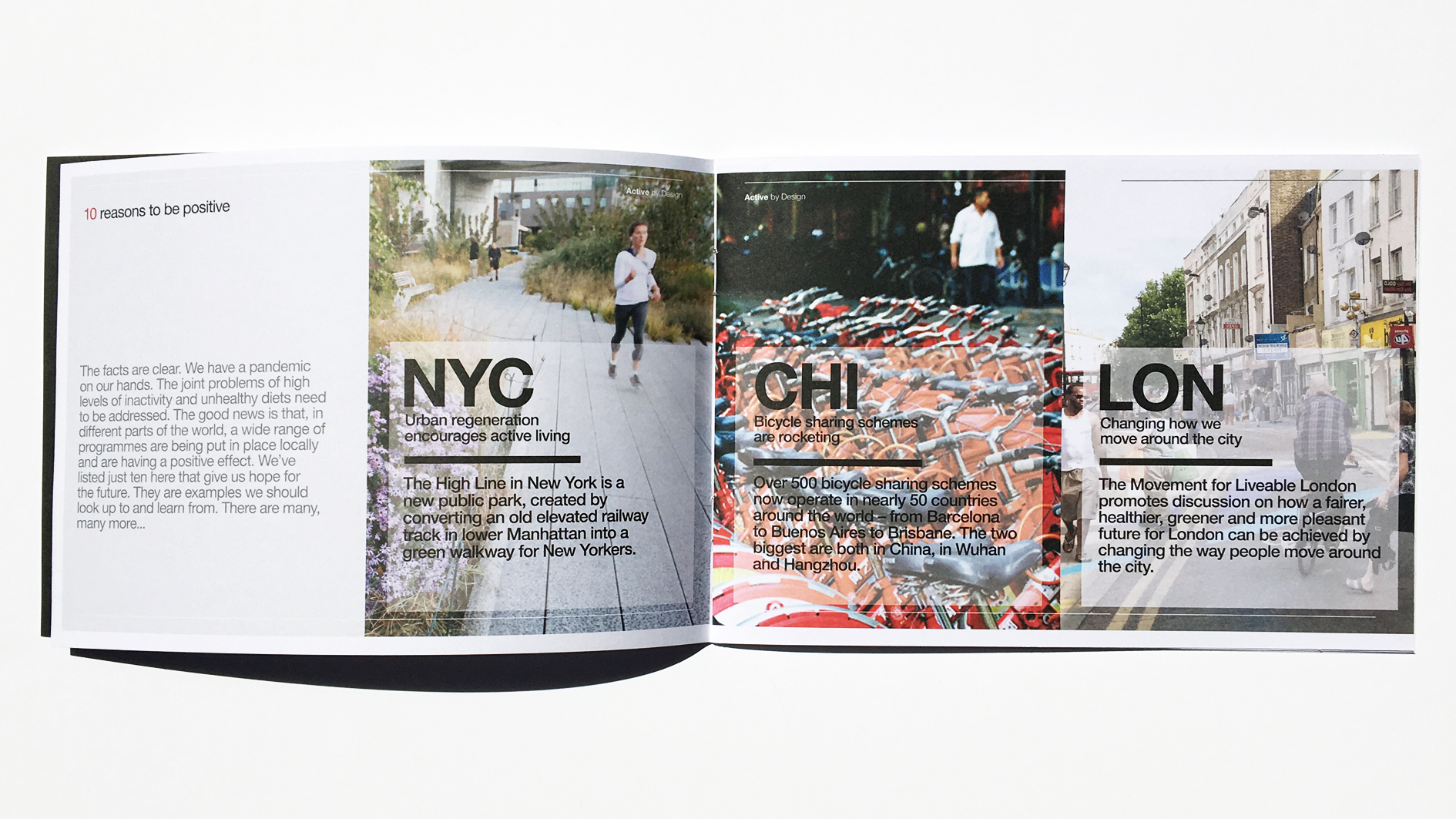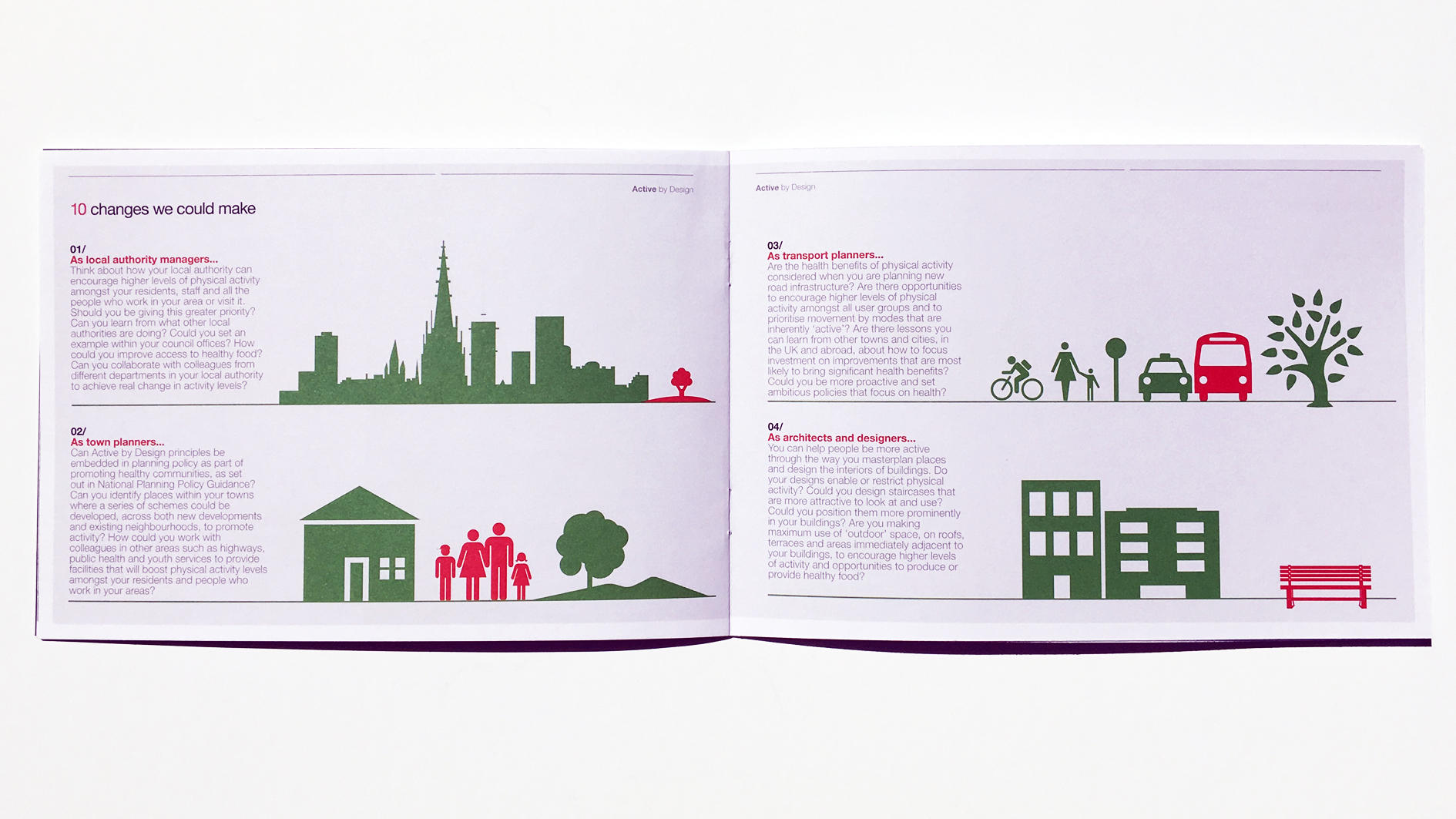Using design to tackle obesity
Design Council
Philip led a team of specialists to create ‘Active by Design’ for the Design Council – a significant initiative in the fight against the growing obesity epidemic in the UK.
The issues and challenge
The Design Council are keen to support ways in which design can help to tackle the growing obesity epidemic in the UK. Philip offered his services on a ‘pro bono’ basis to contribute to this effort. He headed up a new programme that pulled together strategists, researchers and built environment experts from across the Design Council.
The team needed to interrogate the evidence that existed for the different causes of obesity and related conditions, and consider how design could be used to offer solutions.
What we did
It is clear from the research we did that, although the food we eat is important, the most significant contributor to the growth of obesity is the types and level of exercise that people experience. Focusing on this key finding, the team first developed a new identity for the programme that encapsulated what the Design Council is aiming to do – Active by Design. It places the emphasis squarely on the importance of increasing levels of activity to help people stay fit and healthy. Early on, we also decided it was important to focus on what the Design Council knew best and could therefore contribute most to – the design of buildings and open spaces. The role of the Design Council is to act as a catalyst for change, acknowledging there is no ‘silver bullet’ to the obesity problem and that it can only be solved by many, simple, practical solutions.
Philip worked closely with the in-house design team and a design company who also gave their services free, to create a new promotional booklet and a section of the Design Council website that
(i) highlights the problem with some very graphic, often startling, evidence (ii) gives examples of a wide range of schemes already in operation around the world to tackle obesity through exercise, as encouragement to others and (iii) explains how different professionals (e.g. town planners, architects, developers and employers) can contribute to finding solutions.
We also established a strong partnership with Derwent, a firm of property developers well known for their environmental approach to building development in London, to devise promotional campaigns in four of their buildings. These encourage people to think about how they use their buildings, for example making greater use of the stairs rather than the lifts whenever possible.
The programme was officially launched in March 2014 at an Active by Design summit at City Hall in the heart of London. The summit included representatives from NHS England, Nike and Transport for London.
What we achieved
Active by Design is an ongoing initiative for the Design Council, three years after its creation. They continue to supply evidence to support the importance of finding innovative ways to tackle the obesity epidemic. Reports on the ‘Value of Public Spaces’ and ‘Beyond 2012’ which discusses the legacy of the London 2012 Olympic Games, are amongst others that all support this initiative.
A highly noteworthy testament to the success of Active by Design and related programmes, is the new Design Museum in Kensington – a shining example of the importance and appeal of well-designed staircases.
They are very prominent in the redesigned building, with the lifts hidden to one side. People walk up and down them, and sit on them (on leather seating designed especially), enhancing their visit to the museum and getting much-needed exercise at the same time.
Active by Design continues to have a significant effect, with other initiatives, on this, one of the most pressing problems of our time.




Design for good
Philip provided his time pro bono to help develop this important new programme for Design Council. Initially he led and guided the internal team, bringing in outside experts to assist us when needed. Later on, he helped us develop a suite of promotional materials and to form a special working relationship with one of London's major ethical property developers. Without Philip, this programme may not have ever got off the ground, or would have taken far longer to achieve. His advice and guidance were invaluable to me and my team.
